
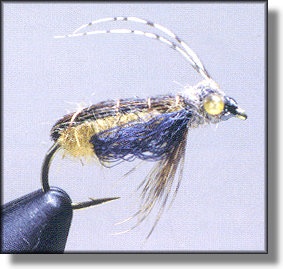 Cinnamon Caddis Pupa By Carl Richards and Bob Braendle
|
|
|
|
Tying Instructions: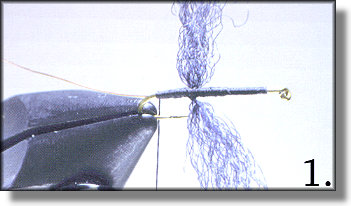
1. Tie a strand of black Z-lon on the bottom of the [dressed] hook,
perpendicular to the shank at a point one third of the way from the
end of the hook shank. Tie-in the wire rib on the bottom of the hook.
 2. Tie-in pheasant tail fibers for those flies with darker backs. Dub the body past the Z-lon to cover three quarters of the hook shank.*
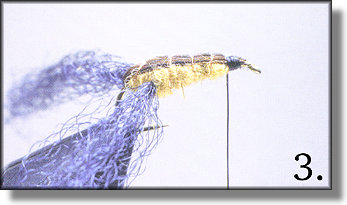
|
|
3. Fold the pheasant tail fibers forward and tie-in. Wrap the rib forward
and tie-off.
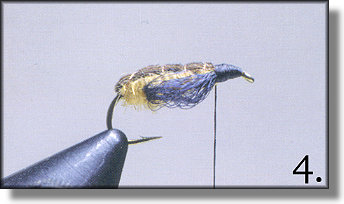 4. Pull the Z-lon forward and tie-off on the bottom of the hook.
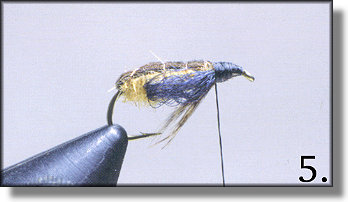 5. Tie-in beard-style six fibers of brown soft hackle for the legs.
|
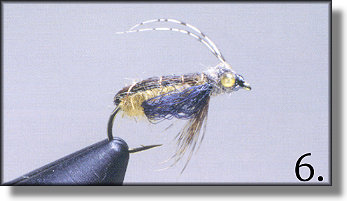 6. Tie-in mono eyes or burn your own by centering an appropriate length of mono in hemostates or hackle pliers and burn each end. Dub a head by figure-eighting around the eyes with dubbing. Tie-in antennae. Whip finish and cement.
|
|
* Publisher's Note: If you wish an even more realistic fly,
tie the pheasant fibers on with a very short stub extending over the bend
of the hook, then continue to make the wing pads. The actual pupae does
have small extended tails as can be seen in the
Not Quiet Entomology article on the Cinnamon Caddis. I would also use
the Mustad Shrimp/Caddis Hook (80250BR) for a more realistic nymph shape,
pinch the barb before tying. We thank Frank Amato Publications Inc. for use permission for this excerpt from Caddis Super Hatches. |